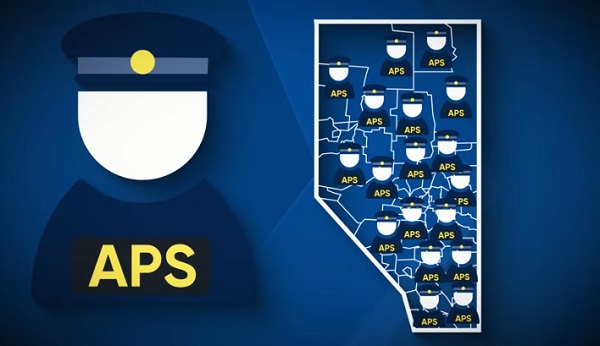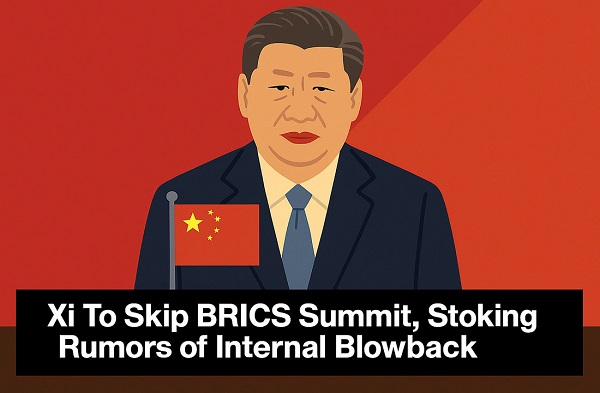Opinion
Fentanyl Fiasco: The Tragic Missteps of BC’s Drug Policy
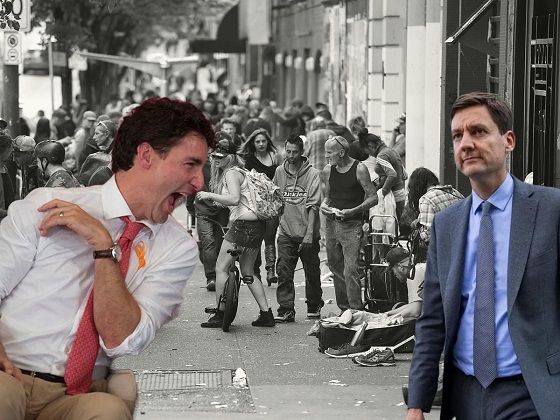
From The Opposition News Network
|
|
Unmasking the Destructive Cycle of Drug Policy in British Columbia. A Tale of Good Intentions and Dire Consequences
My fellow Canadians, it’s been a challenging time. I had initially planned to bring you the latest spectacle from the House of Commons, featuring Kristian Firth, but fate had other plans. A personal emergency struck closer to home—a fentanyl overdose in the family. This tragic event threw us headlong into the chaotic circus that is the British Columbia health system. Let me be frank: the system is a mockery. The privacy laws that supposedly protect us also shroud our crises in unnecessary mystery. When my uncle was found unconscious and rushed to the ICU, the walls of confidentiality meant we could not even ascertain his condition over the phone. They notify you of the disaster but cloak its nature in secrecy. It’s an absurdity that only adds to the anguish of families grappling with the realities of addiction.
Now, let’s address the elephant in the room: our approach to drug addiction. The authorities label it a disease, yet paradoxically offer the afflicted the choice between seeking help and remaining in their dire state. This half-hearted stance on drug addiction only perpetuates a cycle of relapse and despair. As we speak, thousands tumble through the revolving doors of our medical facilities—5,975 apparent opioid toxicity deaths this year alone, an 8% increase from 2022. Daily, we see 22 deaths and 17 hospitalizations, and yet our response remains as ineffective as ever. This issue transcends our national borders. The U.S. has openly criticized China for its role in the opioid crisis, accusing it of flooding North America with fentanyl—a drug so potent, it’s decimating communities at an unprecedented rate. Just last year, over 70,000 Americans succumbed to fentanyl overdoses. And what’s more damning? Reports from U.S. congressional committees suggest that the Chinese government might be subsidizing firms that traffic these lethal substances. Lets be clear this is a state-sponsored assault on our populace.
In response to this crisis BC NDP policymakers have championed the notion of “safe supply” programs. These initiatives distribute free hydromorphone, a potent opioid akin to heroin, with the intention of steering users away from the perils of contaminated street drugs. At first glance, this approach might seem logical, even humane. However, the grim realities paint a far different picture, one where good intentions pave the road to societal decay. Addiction specialists are sounding the alarm, and the news isn’t good. While hydromorphone is potent, it lacks the intensity to satisfy fentanyl users, leading to an unintended consequence: diversion. Users, unappeased by the drug’s effects, are selling their “safe” supply on the black market. This results in a glut of hydromorphone flooding the streets, crashing its price by up to 95% in certain areas. This collapse in street value might seem like a win for economic textbooks, but in the harsh world of drug abuse, it’s a catalyst for disaster. Cheap, readily available opioids are finding their way into the hands of an ever-younger audience, ensnaring teenagers in the grips of addiction. Far from reducing harm, these programs are inadvertently setting the stage for a new wave of drug dependency among our most vulnerable.
Programs designed to save lives are instead spinning a web of addiction that ensnares not just existing drug users but also initiates unsuspecting adolescents into a life of dependency. What’s needed isn’t more drugs, even under the guise of medical oversight, but a robust support system that addresses the root causes of addiction yet, the stark reality on the streets tells a story of systemic failure. Let’s dissect the current approach to handling addiction, a condition deeply intertwined with our societal, legal, and health systems.
Take a typical scenario—an individual battling the throes of addiction. Many of them find themselves ensnared by the law, often for crimes like theft, driven by the desperate need to sustain their habit. Yes, many addicts find themselves behind bars, where, paradoxically, they claim to clean up. Jail, devoid of freedom, ironically becomes a place of forced sobriety.
Now, consider the next step in this cycle: release. Upon their release, these individuals, now momentarily clean, are promised treatment—real help, real change. Yet, here’s the catch: this promised help is dangled like a carrot on a stick, often 30 or more days away. What happens in those 30 days? Left to their own devices, many relapse, falling back into old patterns before they ever step foot in a treatment facility.
This brings us to a critical question: why release an individual who has begun to detox in a controlled environment, only to thrust them back into the very conditions that fueled their addiction? Why not maintain custody until a treatment spot opens up? From a fiscal perspective, this dance of incarceration, release, and delayed treatment is an exercise in futility, burning through public funds without solving the core issue. Moreover, from a standpoint of basic human decency and dignity, this system is profoundly flawed. We play roulette with lives on the line, hoping against odds for a favorable outcome when we already hold a losing hand. This isn’t just ineffective; it’s cruel.
Final Thoughts
As we close the curtain on this discussion, let’s not mince words. The BC system’s approach to drug addiction treatment isn’t just flawed; it’s a catastrophic failure masquerading as mercy. Opposition leader Pierre Poilievre has hit the nail squarely on the head in his piece for the National Post. He articulates a vision where compassion and practicality intersect, not through the failed policies of perpetual maintenance, but through genuine, recovery-oriented solutions. His stance is clear: treat addiction as the profound health crisis it is, not as a criminal issue to be swept under the rug of incarceration.
Contrast this with the so-called ‘safe supply’ madness—a Band-Aid solution to a hemorrhaging societal wound. In the dystopian theatre of the Downtown Eastside, where welfare checks and drug dens operate with the efficiency of a grotesque assembly line, what we see is not healthcare, but a deathcare system. It’s a cycle of despair that offers a needle in one hand and a shot of naloxone in the other as a safety net. This isn’t treatment; it’s a perverse form of life support that keeps the heart beating but lets the soul wither.
Come next election in BC, if any provincial party is prepared to advocate for a true treatment-first approach, to shift from enabling addiction to empowering recovery, they will have my—and should have your—unwavering support. We must champion platforms that prioritize recovery, that respect human dignity, and that restore hope to the heartbroken streets of our communities.
The NDP BC government’s current model perpetuates death and decay under the guise of progressive policy. It’s a cruel joke on the citizens who need help the most. We can no longer afford to stand idly by as lives are lost to a system that confuses sustaining addiction with saving lives. Let’s rally for change, for recovery, for a future where Canadians struggling with addiction are given a real shot at redemption. This isn’t just a political imperative—it’s a moral one. The time for half-measures is over. The time for real action is now.
Become a supporter of The Opposition with Dan Knight .
For the full experience, click here to upgrade your subscription.
Health
RFK Jr. Unloads Disturbing Vaccine Secrets on Tucker—And Surprises Everyone on Trump

The Vigilant Fox
This conversation with startle you, infuriate you—then lift your spirits
It’s not every day an active HHS Secretary sits down for 90 minutes straight with Tucker Carlson.
But that’s exactly what happened, and Kennedy instantly seized Carlson’s attention with a chilling story of CDC corruption.
He revealed that the health agency buried a 1999 internal study led by researcher Thomas Verstraten, which showed an alarming 1135% increase in autism risk from the hepatitis B vaccine.
Kennedy said the researchers were “shocked” by the findings.
So what did they do? They covered it up, according to Kennedy.
“They got rid of all the older children essentially and just had younger children who are too young to be diagnosed [with autism].”
RFK Jr. then explained the real reason why your pediatrician will kick you out of their practice for refusing vaccines.
“There’s a published article out there now that says that 50% of revenues to most pediatricians come from vaccines.”
It’s all about the money. The higher the vaccination rate, the bigger the bonus.
“And that’s why your pediatrician, if you say I want to go slow on the vaccines… will throw you out of his practice because you’re now jeopardizing that bonus structure.”
To the claim that the vaccine–autism link has been “debunked,” Kennedy had a message for Anderson Cooper, Jake Tapper, and everyone who smugly insists on it.
“None of the vaccines given to children in the first six months of life have ever been studied for autism.”
Let that sink in.
He went further, revealing that the CDC actually did find a link when they studied the DTaP vaccine.
But they dismissed it. Kennedy said they claimed it “didn’t count” because the data came from VAERS—the very system they use to track vaccine injuries.
So when the evidence pointed to harm, they simply claimed their own system wasn’t reliable enough and took no steps to fix it.
The vaccine corruption didn’t end there. Kennedy attested that the CDC killed off a vaccine injury reporting system that actually worked—because it worked too well.
It showed that 1 in 37 vaccines caused an injury.
Tucker was stunned.
“Of all vaccines?” he asked.
“Yeah,” Kennedy confirmed.
RFK Jr. explained that the CDC funded a study led by researcher Ross Lazarus. It compared a sophisticated machine-counting system to VAERS.
What did they find? VAERS was failing to catch over 99% of vaccine injuries.

The new system also revealed that 2.6% of all vaccinations resulted in an injury.
So what did the CDC do? They shut it down in 2010. And they’re still using VAERS today—even though it’s a completely inadequate system.

But Kennedy didn’t stop at old vaccine scandals. He also broke down Pfizer’s own COVID vaccine trial data. That trial showed a 23% higher death rate in the vaccinated group.
• Pfizer gave 21,720 people the vaccine and 21,728 the placebo.
• One vaccinated person died of COVID. Two placebo recipients died. They used this tiny difference to claim “100% effective” based on relative risk reduction.
• But in absolute terms, it took 22,000 vaccinations to save one life.
• Over six months, 21 vaccinated participants died of all causes, compared to 17 in the placebo group—a 23.5% higher death rate.
And then there’s vaccine spokesperson Paul Offit, often seen on CNN and other mainstream networks.
Kennedy shared an infuriating story about how he literally “voted himself rich” on the rotavirus vaccine.
While serving on the CDC’s ACIP committee, Offit voted to add rotavirus vaccination to the childhood schedule—even as he was developing his own competing vaccine. He guaranteed demand for his product.
The first approved rotavirus vaccine, RotaShield, was yanked from the market for causing dangerous intussusception. Offit’s vaccine, RotaTeq, eventually replaced it.
He and his partners later sold their rights to Merck for $186 million. As RFK Jr. said, Offit literally “voted himself rich.”
When Carlson mentioned Fauci, Kennedy revealed how Fauci funded research that helped scientists hide evidence of lab-made viruses.
The technique, called “seamless ligation,” allowed researchers to engineer viruses in a lab without leaving telltale genetic fingerprints.
RFK Jr. explained:
“One of his fundees, Ralph Baric, from the University of North Carolina, developed a technique called the seamless ligation technique, which is a technique for hiding the laboratory origins of a manipulated virus.”
“… normally if there’s a virus manipulated, researchers can look at the DNA sequences and they can say this thing was created in a lab. Ralph Baric had developed a technique that he called the no-see technique and its technical name was seamless ligation, and it was a way of hiding evidence of human tampering.”
He called it the exact opposite of what real public health work should be. Carlson cut in, saying, “That’s what you would do if you’re creating viruses for biological warfare.”
The conversation shifted to Trump, leading to one of the biggest highlights of the entire interview.
First, Kennedy explained that Trump chose his cabinet in an unorthodox way: he wanted to see three clips of each candidate performing on TV before considering them for the job.
“One of the things with President Trump is that he really knows how to pick talent… For every one of the positions that he picked, he wanted to see three clips of them performing on TV. He’s very conscious of the fact that these people are going to be out selling his program to the public,” Kennedy said.
That’s when Kennedy ended the interview with a bang, sharing his genuine thoughts about Trump for three straight minutes. It was one of the standout moments of the entire conversation.
If you’re on the fence about Trump, listen to Kennedy here. It might just change how you see him.
“I had him pegged as a narcissist, when narcissists are incapable of empathy. And he’s one of the most empathetic people that I’ve met,” Kennedy said.
“He’s immensely curious, inquisitive, and immensely knowledgeable. He’s encyclopedic in certain areas that you wouldn’t expect,” he continued.
Kennedy added that Trump genuinely cares about soldiers who go to war, citing how Trump “always talks about the casualties on both sides” of the Russia–Ukraine conflict.
“Whether it’s vaccines or Medicaid or Medicare, he’s always thinking about how this impacts the little guy. And the Democrats have him pegged as a guy who’s sort of sitting in the Cabinet meeting talking about how can we make billionaires richer. He’s the opposite of that. He’s a genuine populist,” Kennedy said.
There’s so much more in this conversation, and it might change the way you think about vaccines forever.
For the full picture, watch the entire interview below.
I also wanted to let you know I’m sharing a lot more than just posts like this throughout the day.
For quick clips and updates, check out my Substack Notes page.
Alongside my top 10 daily roundup, it’s one of the best ways to keep up with the news cycle.
Just download the Substack app and follow my page there to see content that doesn’t appear on this main page.
Subscribe to The Vigilant Fox
Bruce Dowbiggin
The Game That Let Canadians Forgive The Liberals — Again

With the Americans winning the first game 3-1, a sense of panic crept over Canada as it headed to Game 2 in Boston. Losing a political battle with Trump was bad enough, but losing hockey bragging rights heading into a federal election was catastrophic for the Family Compact.
“It’s also more political than the (1972) Summit Series was, because Canada’s existence wasn’t on the line then, and it may be now. You’re damn right Canadians should boo the (U.S.) anthem.” Toronto Star columnist Bruce Arthur before Gm. 1 of USA/ Canada in The 4 Nations Cup.
The year 2025 is barely half over on Canada Day. There is much to go before we start assembling Best Of Lists for the year. But as Palestinian flags duel with the Maple Leaf for prominence on the 158th anniversary of Canada’s becoming a sovereign country it’s a fair guess that we will settle on Febuary 21 as the pivotal date of the year— and Canada’s destiny as well.
That was the date of Game 2 in the U.S./Canada rivalry at the Four Nations Tournament. Ostensibly created by the NHL to replace the moribund All Star format, the showdown of hockey nations in Boston became much more. Jolted by non-sports factors it became a pivotal moment in modern Canadian history.
Set against U.S. president Donald Trump’s bellicose talk of Canada as a U.S. state and the Mike Myers/ Mark Carney Elbows Up ad campaign, the gold-medal game evoked, for those of a certain age, memories of the famous 1972 Summit Series between Canada and the USSR. And somehow produced an unprecedented political reversal in Canadian elections.
As we wrote on Feb. 16 after Gm. 1 in Montreal, the Four Nations had been meant to be something far less incendiary. “Expecting a guys’ weekend like the concurrent NBA All Star game, the fraternal folks instead got a Pier Six brawl. It was the most stunning beginning to a game most could remember in 50 years. (Not least of all the rabid Canadian fanbase urging patriotism in the home of Quebec separation) Considering this Four Nations event was the NHL’s idea to replace the tame midseason All Star Game where players apologize for bumping into each other during a casual skate, the tumult as referees tried to start the game was shocking.
“Despite public calls for mutual respect, the sustained booing of the American national anthem and the Team Canada invocation by MMA legend Georges St. Pierre was answered by the Tkachuck brothers, Matthew and Brady, with a series of fights in the first nine seconds of the game. Three fights to be exact ,when former Canuck J.T. Miller squared up with Brandon Hagel. (All three U.S. players have either played on or now play for Canadian NHL teams.)
“Premeditated and nasty. To say nothing of the vicious mugging of Canada’s legend Sidney Crosby behind the U.S. net moments later by Charlie McEvoy.”
With the Americans winning the game 3-1 on Feb. 15, a sense of panic crept over Canada as it headed to Game 2 in Boston. Losing a political battle with Trump was bad enough, but losing hockey bragging rights heading into a federal election was catastrophic for the Family Compact. As we wrote in the aftermath, a slaughter was avoided.

“In the rematch for a title created just weeks before by the NHL the boys stuck to hockey. Anthem booing was restrained. Outside of an ill-advised appearance by Wayne Gretzky— now loathed for his Trump support— the emphasis was on skill. Playing largely without injured Matthew and Brady Tkachuk and McAvoy, the U.S. forced the game to OT where beleaguered goalie Craig Binnington held Canada in the game until Connor McDavid scored the game winner. “
The stunning turnaround in the series produced a similar turnaround in the Canadian federal election. Galvanized by Trump’s 51st State disrespect and exhilarated by the hockey team’s comeback, voters switched their votes in huge numbers to Carney, ignoring the abysmal record of the Liberals and their pathetic polling. From Pierre Poilievre having a 20-point lead in polls, hockey-besotted Canada flipped to award Carney a near-majority in the April 28 election.
The result stunned the Canadian political class and international critics who questioned how a single sporting event could have miraculously rescued the Liberals from themselves in such a short time.

While Canada soared because of the four Nations, a Canadian icon crashed to earth. “Perhaps the most public outcome was the now-demonization of Gretzky in Canada. Just as they had with Bobby Orr, another Canadian superstar living in America, Canadians wiped their hands of No. 99 over politics. Despite appeals from Orr, Don Cherry and others, the chance to make Gretzky a Trump proxy was too tempting.
We have been in several arguments on the subject among friends: Does Gretzky owe Canada something after carrying its hockey burden for so long? Could he have worn a Team Canada jersey? Shouldn’t he have made a statement that he backs Canada in its showdown with Trump? For now 99 is 0 in his homeland.”
Even now, months later, the events of late February have an air of disbelief around them, a shift so dramatic and so impactful on the nation that many still shake their heads. Sure, hockey wasn’t the device that blew up Canada’s politics. But it was the fuse that created a crater in the country.
Bruce Dowbiggin @dowbboy is the editor of Not The Public Broadcaster A two-time winner of the Gemini Award as Canada’s top television sports broadcaster, his new book Deal With It: The Trades That Stunned The NHL And Changed hockey is now available on Amazon. Inexact Science: The Six Most Compelling Draft Years In NHL History, his previous book with his son Evan, was voted the seventh-best professional hockey book of all time by bookauthority.org . His 2004 book Money Players was voted sixth best on the same list, and is available via brucedowbigginbooks.ca.
-

 Alberta23 hours ago
Alberta23 hours agoAlberta judge sides with LGBT activists, allows ‘gender transitions’ for kids to continue
-

 Crime12 hours ago
Crime12 hours agoNational Health Care Fraud Takedown Results in 324 Defendants Charged in Connection with Over $14.6 Billion in Alleged Fraud
-

 Health12 hours ago
Health12 hours agoRFK Jr. Unloads Disturbing Vaccine Secrets on Tucker—And Surprises Everyone on Trump
-

 Crime1 day ago
Crime1 day agoSuspected ambush leaves two firefighters dead in Idaho
-
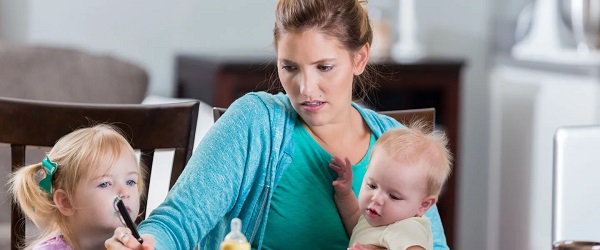
 Business1 day ago
Business1 day agoMassive government child-care plan wreaking havoc across Ontario
-

 Bruce Dowbiggin1 day ago
Bruce Dowbiggin1 day agoThe Game That Let Canadians Forgive The Liberals — Again
-

 Alberta1 day ago
Alberta1 day agoAlberta Independence Seekers Take First Step: Citizen Initiative Application Approved, Notice of Initiative Petition Issued
-
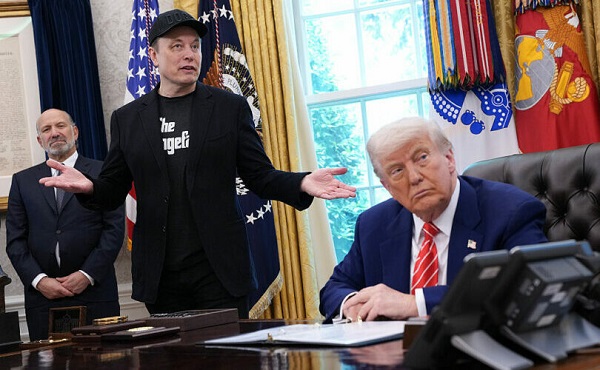
 Business40 mins ago
Business40 mins agoElon Musk slams Trump’s ‘Big Beautiful Bill,’ calls for new political party



